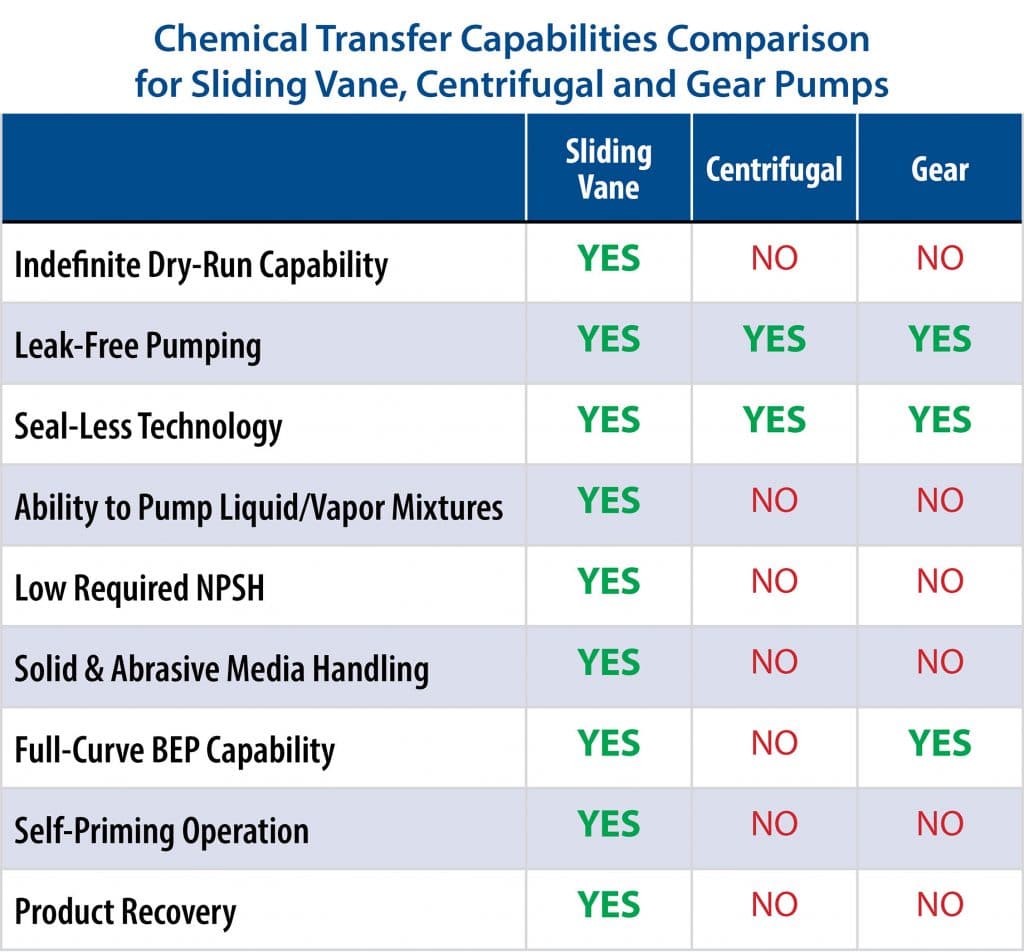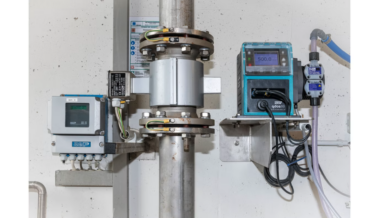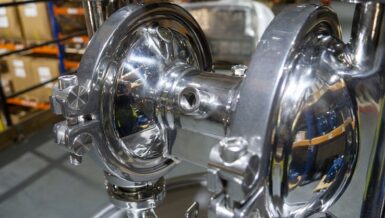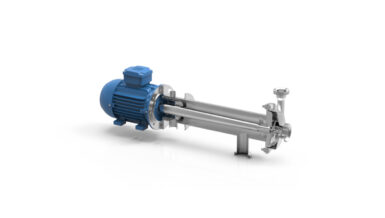Introduction
Pumps termed as seal-less, seal-free or leak-free (the terms are generally interchangeable) became a realistic option for operators in chemical-processing applications more than 30 years ago. The first iteration had one main job: perform better at preventing the leakage of hazardous materials than sealed pumps through a seal-less design. However, these legacy seal-less pumps were not readily embraced at the outset because:
- They were expensive
- There was broad skepticism that the first seal-less designs could live up to their leak-free promise
It wasn’t until about 15 years later, in the early 2000s, that seal-less pump technology had evolved to the point where it could claim to be both reliable and totally leak-free. The mindset of the user had also evolved by then; leak-free pumps were not just being used when handling hazardous materials, they were being used for the handling of basic liquids like water. The driver behind this change in thinking was that users had become less willing, or capable, of dealing with seal failures than they were 50 years ago. In other words, even a so-called “nuisance” water leak would require the pump to be taken offline, which would result in expensive downtime and maintenance costs. The solution: pivot to a seal-less leak-free pump that would never (theoretically) need to be maintained or repaired because of a leak incident.
Today, after steady growth over the past 15 years, the global seal-less centrifugal pump market is valued in excess of $4.5 billion. In fact, sales of seal-less ANSI centrifugal pumps have the potential to eclipse the sealed pump market in future years.
Feeling The Pain
The dominant technology for seal-less pumps in chemical-processing applications has been centrifugal pumps because their manufacturers were the first to embrace the technology and develop what came to be recognized as the preferred leak-free pump style. The result is a class of pumps that offers leak-free performance with reasonable reliability when handling a wide range of chemical products.
Seal-free centrifugal pumps were instantly popular in these applications because of their basic design. The success of centrifugal pumps also brought with it a rash of copycat models to the market, to the extent that there are now hundreds of “me too” brands available for purchase. Admittedly, this market saturation has helped lower the purchase price of these pumps.
Similarly, the manufacturers of internal gear pumps quickly adapted their legacy sealed and packed designs to accommodate a seal-free option. Keeping the internal pumping elements unchanged, the early seal-free gear pumps provided a basic leak-free technology that was attractive during the early development of seal-free pumps.
Despite their undoubted success in cornering the seal-less market in chemical-processing applications, centrifugal and gear pumps have inherent attributes that create operational challenges. Users and engineers should be aware of these characteristics when designing systems and selecting pump technologies. In short, chemical-processing applications are rarely pristine and can be very unpredictable, often leading to pervasive system outages and equipment failures if the proper pumping solution is not deployed.
Centrifugal pumps perform best when applications require stable, unchanging conditions. Whether in high-volume bulk transfer or the pressure boosting of low flow rates, centrifugal pumps are successful with low viscosity, stable pressure and unchanging flow rates. Centrifugal pumps perform worst when applied to broad liquids and systems, because centrifugal pumps are tuned to operate at a single best efficiency point (BEP). Because centrifugal pumps react to any adjustment or upset in operating environment or liquid properties, they fail when applied to systems with multiple operating points, varying tank liquid levels, inline control valves and batch demands. This is especially true for applications that feature repeated dry run, vapor, low net positive suction head (NPSHA) and suspended solids. In all of these situations, a centrifugal pump deviates from its singular BEP and degrades pump life with every gallon or liter pumped. Seal-less designs compound these operational issues with the use of coated ceramic bearings, which provide a limited dry-run allowance until catastrophic failure. Control systems are often applied with these designs in an attempt to reduce system failure; however, frequent nuisance alarms often render these warnings as useless.
Gear pumps succeed in chemical-processing applications that are lubricating, highly viscous and intermittent. Further, retrofitting an existing sealed or packed gear pump to a seal-less gear pump is extremely simple because the overall footprint is unchanged (i.e. no piping modifications or adjustments to motor/gear drive are required). Gear pumps protect pump users from a key problem with centrifugal pumps: sensitivity to a singular BEP. Gear pumps operate consistently with changing environmental and liquid conditions. Unfortunately, all gear pumps suffer from the same pain point: internal wear. With every rotation, the pump’s ability to maintain a desired flow rate is compromised. Flow performance degrades as wear increases in three areas: between the gear teeth, between the crescent and gear, and between the casing and gears. This is especially evident with seal-free gear pumps that utilize a cantilevered bearing support design, one that maximizes shaft deflection, material galling and wear of internal sealing surfaces. As such, gear pumps mirror centrifugal pumps in that they suffer during dry-run operation, handling of liquid/vapor mixtures (or low NPSHA) and solid/abrasive media.
An Interesting Alternative
Sliding vane positive displacement pumps can be a first-choice alternative in chemical-processing applications. Sliding vane pumps are simple to use, reliable and flexible. They don’t require tuning to a single BEP; instead they are capable of handling both system and liquid changes. The pump’s vanes self-compensate for wear, sustaining like-new performance throughout the system’s operational life. Vane pumps are best suited for varying system pressure, zero NPSHA, vapor, suspended solids and prolonged dry-run operation. Vane technology is protected from operator error, system upsets and instrument failure. Also, imagine the flexibility offered during hours or days of dry-run operation that is unaffected by poor operating conditions, or the increased functionality of suction-lift, product-recovery and self-priming operations.

This simple design enables a leak-free sliding vane pump to deliver the performance that is necessary for effective high-volume liquid transfer within chemical-processing applications. Currently, a next-generation model of sliding vane pump that features a seal-free magnetic drive is under development. It will offer a number of design and operational enhancements that will further optimize sliding vane pump usage in chemical-processing applications. These enhancements will include:
- Indefinite dry-run capability: Eliminates sensitivity to intermittent, extended or expected dry-run conditions. The guaranteed dry-run duration is orders of magnitude better than competing technologies that rely on sensitive ceramic bearings. It is an indefinite allowance, not a cumulative allowance like that of many seal-free pumps that are utilized today.
- Zero leakage: The containment shell that is at the heart of the pump’s leak-free capabilities is unlike any currently available. Using a proprietary design, this carbon fiber and polyether ether ketone (PEEK) shell is capable of unmatched pressure-containment capability, unlike the current shells made from chopped carbon fiber or unreinforced polymers. As a thermoplastic polymer, the shell will not create heat or produce eddy currents like traditional metallic shells. The result is zero-leakage operation without any concern that heat-caused damage to the pump or its components will occur.
- Zero alignment: Features a close-coupled drive design, enabling quick and easy system setup and eliminating any potential coupling failures
- Self-priming operation: With suction-lift capability approaching 30 feet (9 meters), sliding vane pumps offer new functionality, reduce additional system operating costs and enhance safety for all operators by eliminating the need to pre-prime the system
- Product recovery: Adds line-stripping ability that reduces product waste during or after production runs, recovering the cost of expensive liquids and enhancing safety for plant operators and their staff
- Solids handling: Unlike most competing technologies that self-destruct when confronted with contaminants, leak-free vane pumps can effectively process liquids with suspended-solids levels of up to 30%
- Low required NPSH: A true zero-NPSHR solution, vane pumps are proven solutions for challenging pump inlet conditions, offering sustained performance with liquids featuring up to 15% vapor content
- Full-curve BEP: Unlike alternate options that must be tuned to a single BEP, seal-free vane pumps have the robustness and flexibility to handle multiple changing fluid and system conditions. In other words, vane technology seamlessly handles the dynamic conditions of most chemical-processing systems.
Conclusion
In summary, sliding vane pumps eliminate the pervasive pain points of legacy centrifugal and gear pumps in chemical-processing applications. Namely, leak-free vane pumps have indefinite dry-run capability, can easily handle liquid/vapor mixtures, are insensitive to changes in NPSH and can tolerate some level of solids or abrasive media in the fluid flow. Combine these features with a next-generation seal-free magnetic-drive design and chemical processors will have a new, innovative option when determining the best pump to deploy in their critical manufacturing operations.

About The Author
Geoff VanLeeuwen is the Product Management Director for Blackmer® and PSG®. He can be reached at geoff.vanleeuwen@psgdover.com.































